
Above: Chavín Plaza Mayor, from North-East.
Photo: José Luis Cruzado Coronel

Above: Chavín Plaza Mayor, from North-East.
Photo: José Luis Cruzado Coronel
Current Investigators and Research Collaborators:
* Miriam A. Kolar, MFA, PhD, Project Director and Archaeoacoustics Principal Investigator; Adjunct Professor, CCRMA and Staff Scholar, School for Advanced Research (SAR);
Investigadora Asociada al Programa de Investigación Arqueológica y Conservación Chavín de Huántar (PIACCdH)
* John W. Rick, Professor Emeritus, Stanford University, Archaeology Center and Department of Anthropology;
Director del Programa de Investigación Arqueológica y Conservación Chavín de Huántar (PIACCdH)
* José Luis Cruzado Coronel, Logistics, Documentation, Pututu Replicas and Experiments, Chavín de Huántar, Perú
* Mélanie Ferras, PhD, Associate Professor of Prehispanic Americas Archaeology at Sorbonne University, Faculté de Lettres in the CERAP (Center of Research on Pre-Hispanic Americas); Field Archaeologist, PIACCdH & collaborator in archaeoacoustics fieldwork
* Riemann Ramírez Rodríguez, Pututu Experiments and archaeoacoustics fieldwork, Chavín de Huántar, Perú
* Arql. Ricardo Guerrero de Luna Rueda, Pututu and Canal Experiments, Chavín de Huántar, Perú
* Obert Silva Espinoza, Pututu Experiments, Chavín de Huántar, Perú
* Arql. Ronald San Miguel Fernández, Pututu Experiments and 2019 archaeoacoustics fieldwork assistance, Chavín de Huántar, Perú
Collaborators:
* Ministerio de Cultura, Perú
* Museo Nacional Chavín
* Centro Internacional de Investigación de Chavin (CIICR)
Previous Investigators and Research Collaborators
* Jonathan S. Abel, Consulting Professor, Stanford University, CCRMA
* Perry R. Cook, Professor Emeritus of Computer Science and Music, Princeton University
* John Chowning, Professor Emeritus of Music, Stanford University, Founding Director of Center for Computer Research in Music and Acoustics (CCRMA)
* Julius O. Smith, Professor of Music and Associate Professor (by courtesy) of Electrical Engineering, Stanford University, CCRMA
* Patty Huang, MA, PhD Candidate, Stanford University, CCRMA
* Jyri Huopaniemi, PhD, Adjunct Professor of Audio Technology and Software at Helsinki University of Technology; Director of the Media Laboratory in Nokia Research Center
* Cobi van Tonder, MFA, Stanford University; Ph.D., Digital Arts & Humanities at Trinity College, Dublin
* Leila Takayama, PhD, Stanford University; Human–Robot Interaction researcher
* Katherine J. Murray, PhD, Stanford Communication Between Humans and Interactive Media Lab (CHIMe)
* Chris Chafe, PhD, Professor of Music, Director of CCRMA, Stanford University
* Nick Bryan, PhD, Stanford University
* Travis Skare, PhD Candidate, Department of Electrical Engineering, Stanford University
* Ritesh Y. Kolte, PhD, Department of Electrical Engineering, Stanford University
* Gina Collecchia, MA-MST, Stanford University, CCRMA
* Tito La Rosa, Musician, Sociologist and Builder of Musical Instruments
* Silvia R. Kembel, PhD, University of Colorado, Boulder, Department of Anthropology
* Darius Mostowfi, MSEE, San Carlos, CA
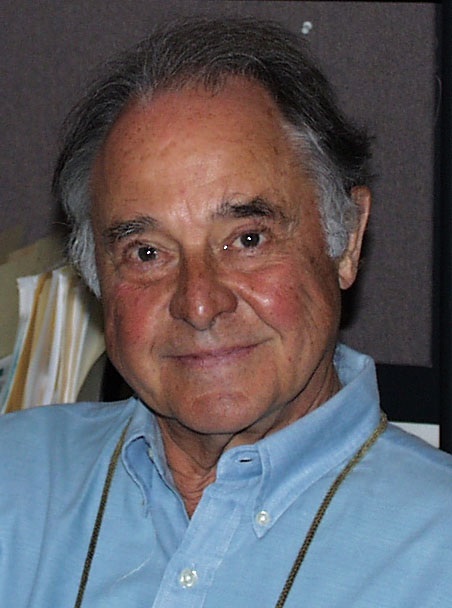 John Chowning was born in Salem, New Jersey, in 1934. Following military service he studied music at Wittenberg University where he concentrated on composition and received his degree in 1959. He then studied composition in Paris for three years with Nadia Boulanger. In 1966 he received the doctorate in composition from Stanford University, where he studied with Leland Smith. With the help of Max Mathews of Bell Telephone Laboratories and David Poole of Stanford, in 1964 he set up a computer music program using the computer system of Stanford's Artificial Intelligence Laboratory. This was the first implementation of an on-line computer music system ever. Beginning in 1964 he began the research leading to the first generalized sound localization algorithm implemented in a quad format in 1966. In 1967, John Chowning discovered the frequency modulation (FM) algorithm in which both the carrier frequency and the modulating frequency are within the audio band. This breakthrough in the synthesis of timbres allowed a very simple yet elegant way of creating and controlling time-varying spectra. Over the next six years he worked toward turning this discovery into a system of musical importance. In 1973, he and Stanford University began a relationship with Yamaha in Japan, which led to the most successful synthesizer technology in the history of electronic musical instruments, known as FM synthesis. John Chowning has received fellowship grants from the National Endowment for the Arts and was artist-in-residence with the Kunstlerprogramm des Deutschen Akademischen Austauschdiensts for the City of Berlin in 1974, and guest artist in IRCAM, Paris in 1978, in 1981, and in 1985. His compositions have been recorded on compact disc, WERGO 2012-50. In 1983 he was honored for his contributions to the field of computer music at the International Computer Music Conference in Rochester, New York. He was elected to the American Academy of Arts and Sciences in 1988. In 1992 he was given The Osgood Hooker Professorship of Fine Arts by the School of Humanities and Sciences at Stanford. The French Ministry of Culture awarded him the Diplôme d'Officier de l'Ordre des Arts et Lettres in 1995 and he was given the Doctorat Honoris Causa December 2002 by the Université de la Méditerranée. Chowning taught computer-sound synthesis and composition at Stanford University's Department of Music and was founder and director of the Center for Computer Research in Music and Acoustics (CCRMA), one of the leading centers for computer music and related research.
John Chowning was born in Salem, New Jersey, in 1934. Following military service he studied music at Wittenberg University where he concentrated on composition and received his degree in 1959. He then studied composition in Paris for three years with Nadia Boulanger. In 1966 he received the doctorate in composition from Stanford University, where he studied with Leland Smith. With the help of Max Mathews of Bell Telephone Laboratories and David Poole of Stanford, in 1964 he set up a computer music program using the computer system of Stanford's Artificial Intelligence Laboratory. This was the first implementation of an on-line computer music system ever. Beginning in 1964 he began the research leading to the first generalized sound localization algorithm implemented in a quad format in 1966. In 1967, John Chowning discovered the frequency modulation (FM) algorithm in which both the carrier frequency and the modulating frequency are within the audio band. This breakthrough in the synthesis of timbres allowed a very simple yet elegant way of creating and controlling time-varying spectra. Over the next six years he worked toward turning this discovery into a system of musical importance. In 1973, he and Stanford University began a relationship with Yamaha in Japan, which led to the most successful synthesizer technology in the history of electronic musical instruments, known as FM synthesis. John Chowning has received fellowship grants from the National Endowment for the Arts and was artist-in-residence with the Kunstlerprogramm des Deutschen Akademischen Austauschdiensts for the City of Berlin in 1974, and guest artist in IRCAM, Paris in 1978, in 1981, and in 1985. His compositions have been recorded on compact disc, WERGO 2012-50. In 1983 he was honored for his contributions to the field of computer music at the International Computer Music Conference in Rochester, New York. He was elected to the American Academy of Arts and Sciences in 1988. In 1992 he was given The Osgood Hooker Professorship of Fine Arts by the School of Humanities and Sciences at Stanford. The French Ministry of Culture awarded him the Diplôme d'Officier de l'Ordre des Arts et Lettres in 1995 and he was given the Doctorat Honoris Causa December 2002 by the Université de la Méditerranée. Chowning taught computer-sound synthesis and composition at Stanford University's Department of Music and was founder and director of the Center for Computer Research in Music and Acoustics (CCRMA), one of the leading centers for computer music and related research.
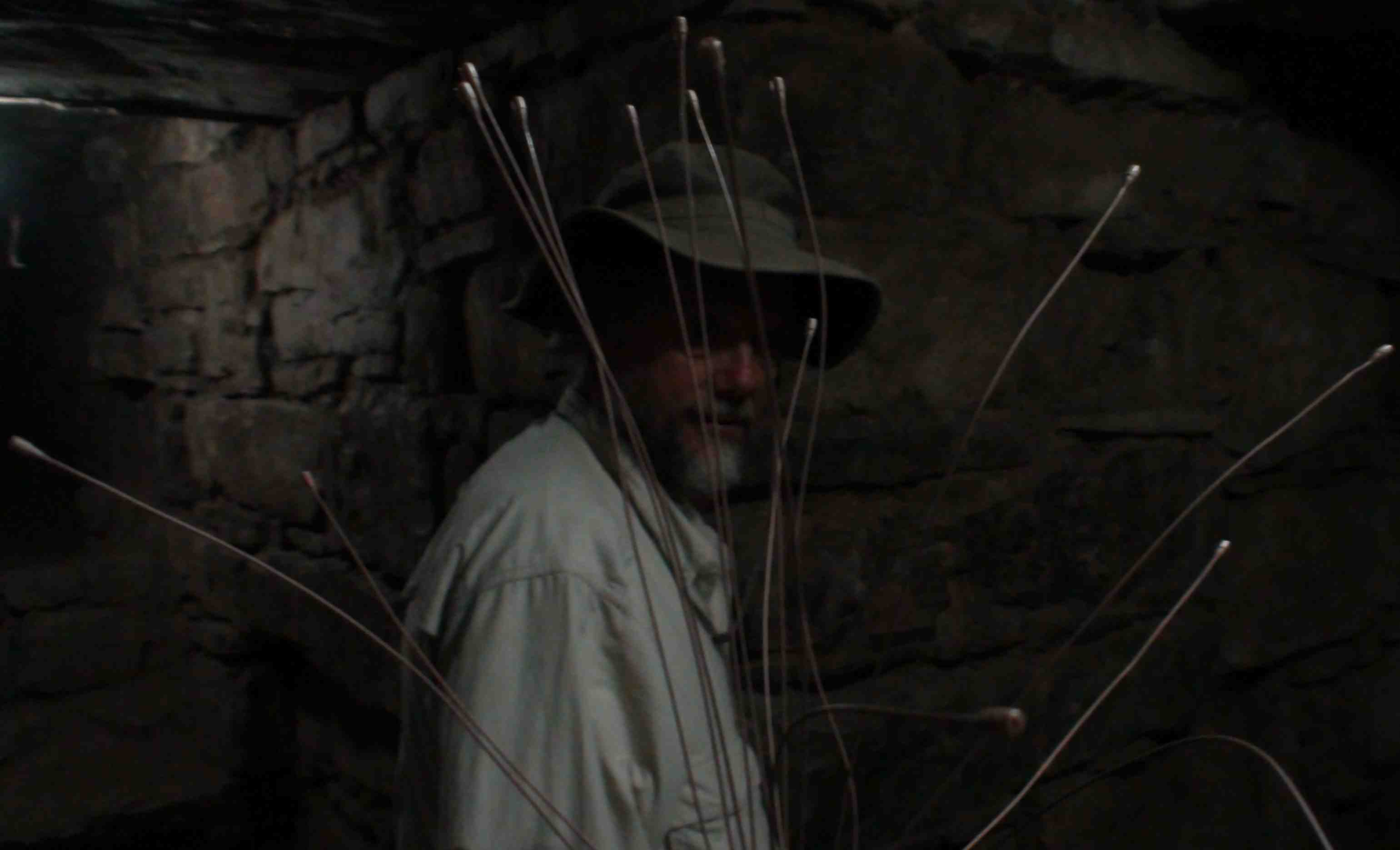 John W. Rick is Professor Emeritus and past Chair of Anthropological Sciences at Stanford University, Curator of Anthropological Collections, and past Director of Stanford's Archaeology Center. His teaching concentrates on South American archaeology, the beginnings of social complexity, hunter–gatherers, stone tools, and digital methodologies in archaeology. For the last 14 years he has directed fieldwork at Chavín de Huántar, a monumental UNESCO World Heritage site dating to the first and second millennia B.C. Cooperative mapping, excavation, and conservation work there is done under long–term agreements with the Peruvian government. His interests there concentrate on understanding how early religious cults strategized the beginnings of political authority in the Andes. A previous long–term project focused on early hunter–gatherer cave sites in the 14,000 ft altitude puna grasslands of Peru, but he has also done archaeological fieldwork throughout South America and the American Southwest; he is also currently co–directing a major fieldwork project on Preclassic sites near Lake Atitlan in the Guatemalan highlands. His publications include books and articles ranging across these subjects, as well as additional topics of interest.
John W. Rick is Professor Emeritus and past Chair of Anthropological Sciences at Stanford University, Curator of Anthropological Collections, and past Director of Stanford's Archaeology Center. His teaching concentrates on South American archaeology, the beginnings of social complexity, hunter–gatherers, stone tools, and digital methodologies in archaeology. For the last 14 years he has directed fieldwork at Chavín de Huántar, a monumental UNESCO World Heritage site dating to the first and second millennia B.C. Cooperative mapping, excavation, and conservation work there is done under long–term agreements with the Peruvian government. His interests there concentrate on understanding how early religious cults strategized the beginnings of political authority in the Andes. A previous long–term project focused on early hunter–gatherer cave sites in the 14,000 ft altitude puna grasslands of Peru, but he has also done archaeological fieldwork throughout South America and the American Southwest; he is also currently co–directing a major fieldwork project on Preclassic sites near Lake Atitlan in the Guatemalan highlands. His publications include books and articles ranging across these subjects, as well as additional topics of interest.
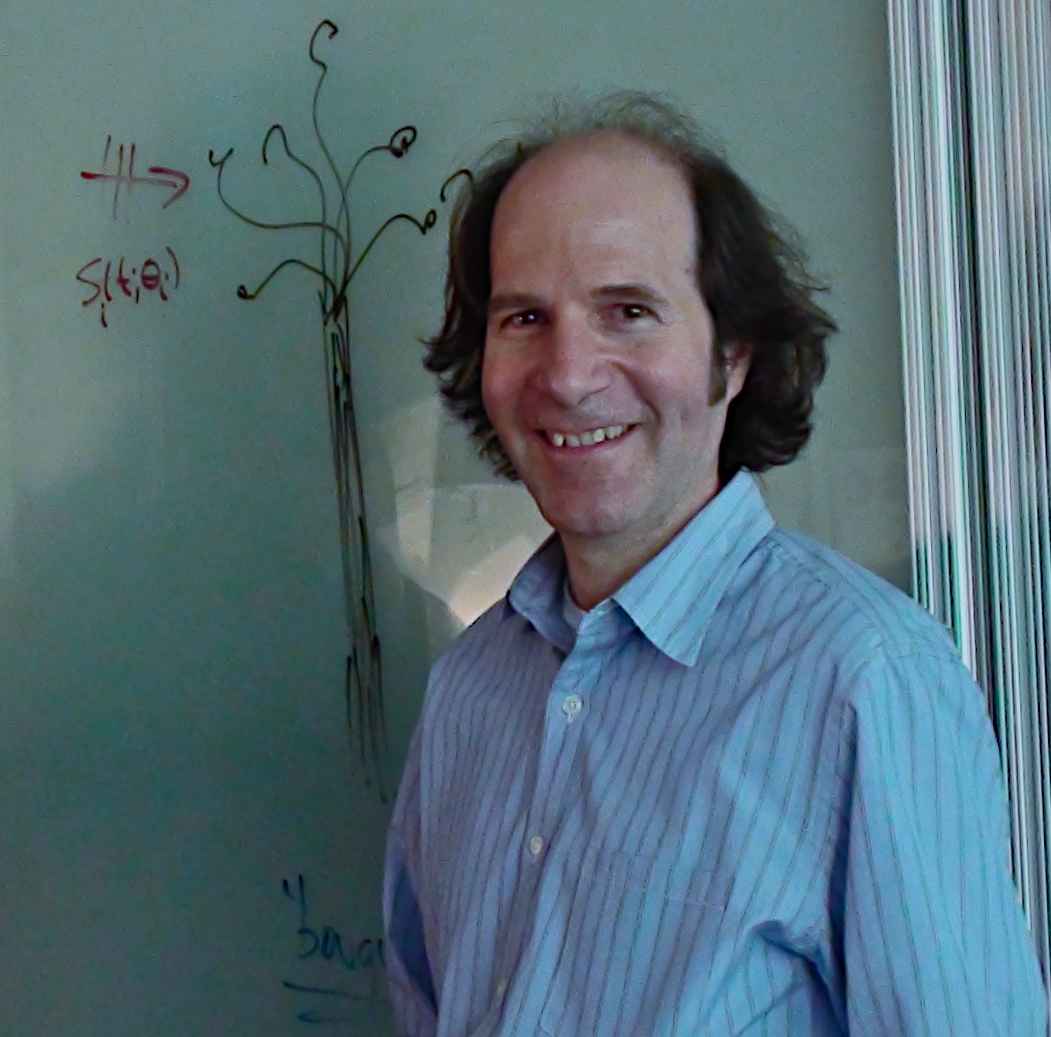 Jonathan S. Abel is a Consulting Professor at the Center for Computer Research in Music and Acoustics (CCRMA) in the Music Department at Stanford University, working in music and audio applications of signal and array processing, parameter estimation and acoustics. He was a Co–Founder and Chief Technology Officer of Universal Audio, Inc., a professional audio equipment manufacturer, where his research efforts concentrated on reverberation and digital emulation of vintage analog audio processors. He was previously a researcher at NASA/Ames Research Center exploring topics in array processing, room acoustics and spatial hearing on a grant through the San Jose State University Foundation. Dr. Abel was also Chief Scientist at Crystal River Engineering, Inc., where he developed their positional audio technology, and was a lecturer in the Department of Electrical Engineering at Yale University. He holds PhD and MS degrees from Stanford University and an SB from MIT, all in electrical engineering. He was voted a Fellow of the Audio Engineering Society for contributions to audio effects processing.
Jonathan S. Abel is a Consulting Professor at the Center for Computer Research in Music and Acoustics (CCRMA) in the Music Department at Stanford University, working in music and audio applications of signal and array processing, parameter estimation and acoustics. He was a Co–Founder and Chief Technology Officer of Universal Audio, Inc., a professional audio equipment manufacturer, where his research efforts concentrated on reverberation and digital emulation of vintage analog audio processors. He was previously a researcher at NASA/Ames Research Center exploring topics in array processing, room acoustics and spatial hearing on a grant through the San Jose State University Foundation. Dr. Abel was also Chief Scientist at Crystal River Engineering, Inc., where he developed their positional audio technology, and was a lecturer in the Department of Electrical Engineering at Yale University. He holds PhD and MS degrees from Stanford University and an SB from MIT, all in electrical engineering. He was voted a Fellow of the Audio Engineering Society for contributions to audio effects processing.
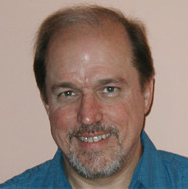 Julius O. Smith is Professor of Music and Associate Professor (by courtesy) of Electrical Engineering, Stanford University, based at the Center for Computer Research in Music and Acoustics (CCRMA). Activities include teaching courses in signal processing and music technology, graduate student advising, and research in signal processing techniques applied to music and audio.
Julius O. Smith is Professor of Music and Associate Professor (by courtesy) of Electrical Engineering, Stanford University, based at the Center for Computer Research in Music and Acoustics (CCRMA). Activities include teaching courses in signal processing and music technology, graduate student advising, and research in signal processing techniques applied to music and audio.
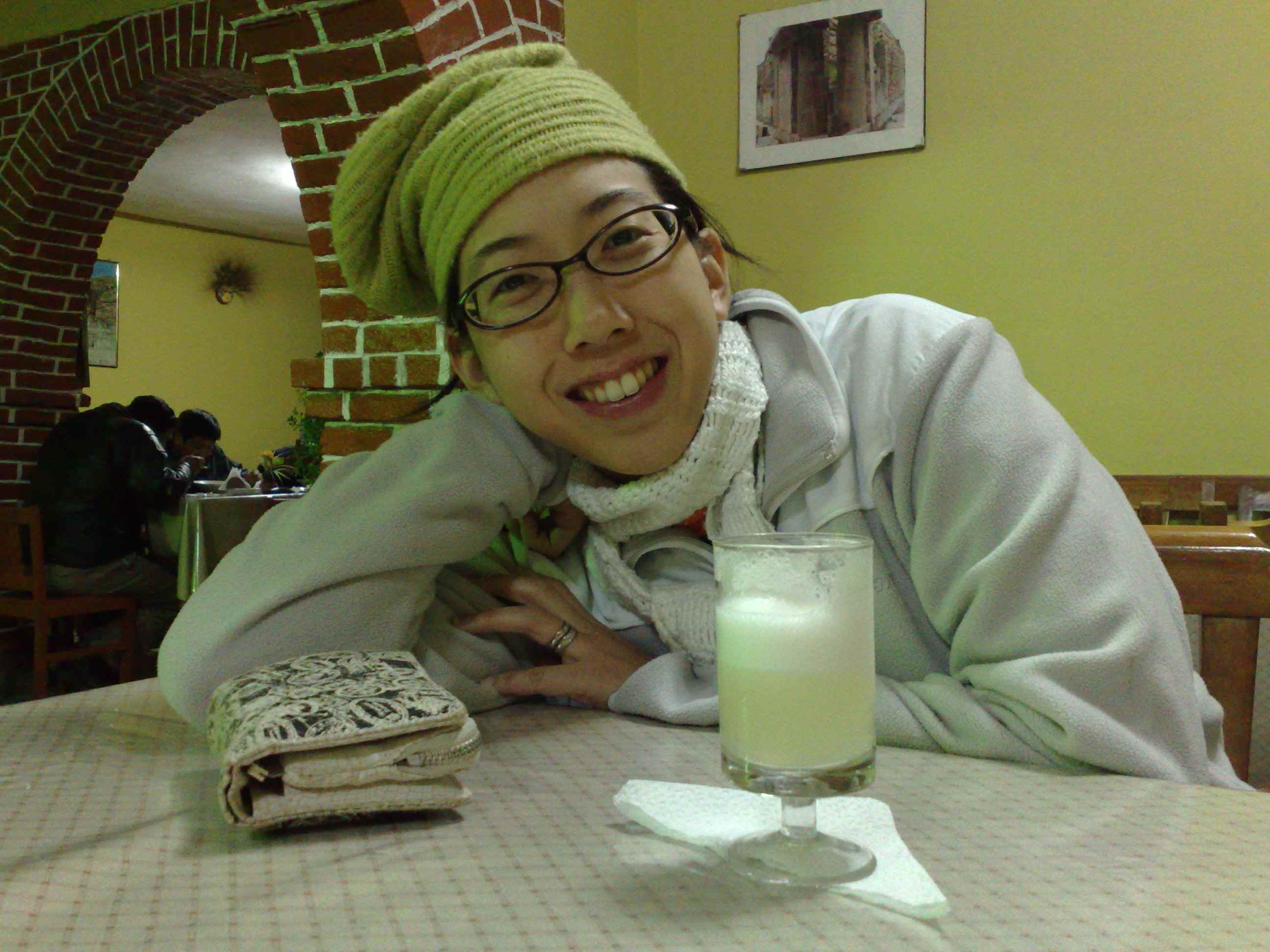 Patty Huang is a DSP engineer and PhD candidate at the Center for Computer Research in Music and Acoustics (CCRMA) at Stanford University.
Patty Huang is a DSP engineer and PhD candidate at the Center for Computer Research in Music and Acoustics (CCRMA) at Stanford University.
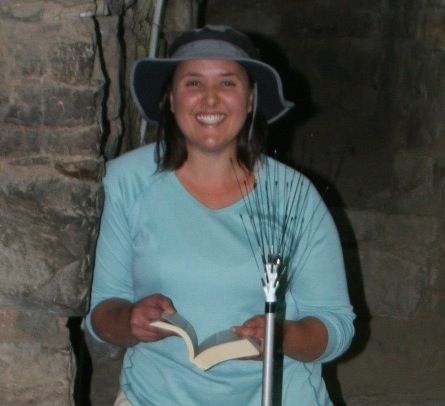 Miriam A. Kolar M.F.A., Ph.D., studies human-sonic interrelationships across time and geography, applying acoustical, perceptual, and cognitive science methodologies within an anthropological framework. Her cultural acoustics research (culturalacoustics.org) reaches across disciplines to understand sonic experiential aspects of past and present life. Since 2008, Dr. Kolar has led integrative archaeoacoustics and music archaeology investigations as a researcher associated with the Programa de Investigación Arqueológica y Conservación Chavín de Huántar (PIACCdH). Dr. Kolar develops digital technologies for cultural heritage research and engagement, in particular exploring the potential of auralizations for scholarship and public interfacing. Topics of interest include human-environmental interrelations, cultural ecologies, contextual knowledge representation, and information ethics. Miriam's studies at Stanford's Center for Computer Research in Music and Acoustics (CCRMA) focused on concerns of human audition in diverse sonic spaces, culminating in her archaeoacoustics PhD Dissertation, Archaeological Psychoacoustics at Chavín de Huántar, Perú, that introduced on-site perceptual testing of architectural acoustics at the 3000-year old Andean ceremonial center, with support from a Stanford Interdisciplinary Graduate Fellowship (SIGF). Miriam has worked as a recording engineer, performance sound designer and mixer, and was previously on faculty as program director of the B.F.A. program in Multi-focus Music Technologies at California Institute of the Arts (CalArts).
Miriam A. Kolar M.F.A., Ph.D., studies human-sonic interrelationships across time and geography, applying acoustical, perceptual, and cognitive science methodologies within an anthropological framework. Her cultural acoustics research (culturalacoustics.org) reaches across disciplines to understand sonic experiential aspects of past and present life. Since 2008, Dr. Kolar has led integrative archaeoacoustics and music archaeology investigations as a researcher associated with the Programa de Investigación Arqueológica y Conservación Chavín de Huántar (PIACCdH). Dr. Kolar develops digital technologies for cultural heritage research and engagement, in particular exploring the potential of auralizations for scholarship and public interfacing. Topics of interest include human-environmental interrelations, cultural ecologies, contextual knowledge representation, and information ethics. Miriam's studies at Stanford's Center for Computer Research in Music and Acoustics (CCRMA) focused on concerns of human audition in diverse sonic spaces, culminating in her archaeoacoustics PhD Dissertation, Archaeological Psychoacoustics at Chavín de Huántar, Perú, that introduced on-site perceptual testing of architectural acoustics at the 3000-year old Andean ceremonial center, with support from a Stanford Interdisciplinary Graduate Fellowship (SIGF). Miriam has worked as a recording engineer, performance sound designer and mixer, and was previously on faculty as program director of the B.F.A. program in Multi-focus Music Technologies at California Institute of the Arts (CalArts).
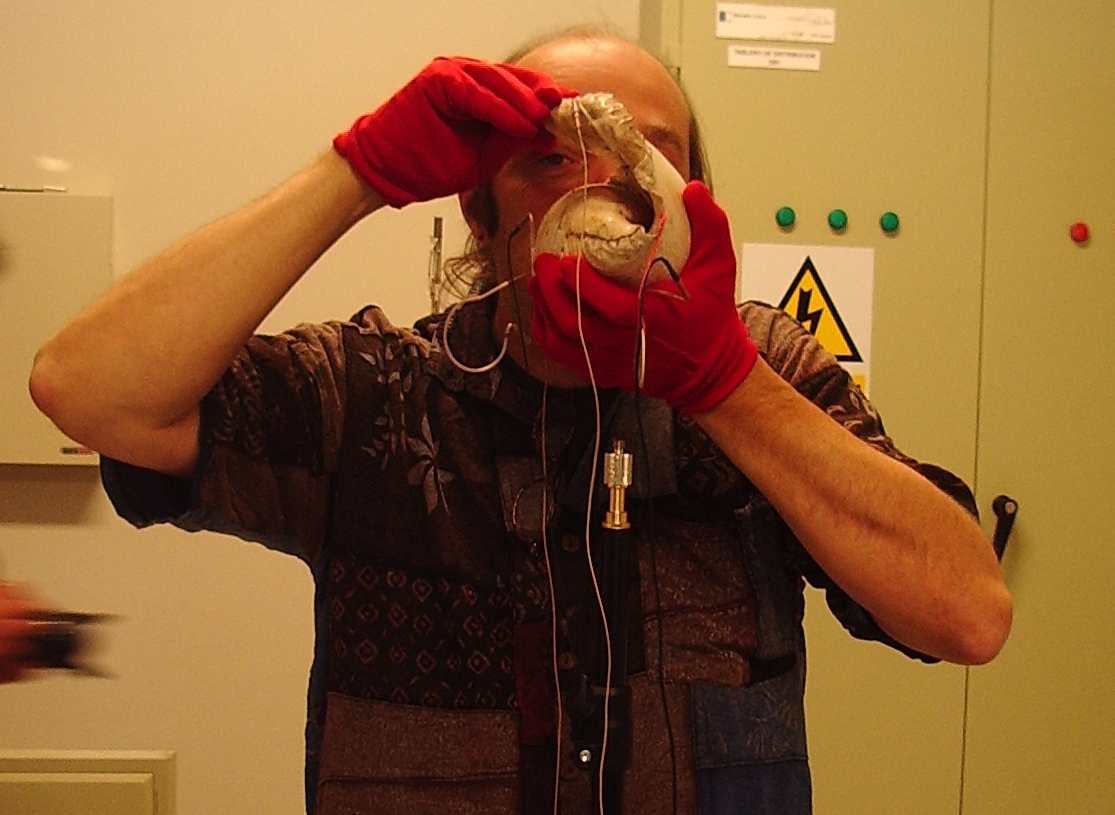 Perry R. Cook is Professor Emeritus of Computer Science, with a joint appointment in Music, at Princeton University. Along with Princeton Music Professor Dan Trueman, Perry co-founded the Princeton Laptop Orchestra (PLOrk) in 2005. Trueman, Cook, and PLOrk received a MacArthur Foundation Digital Media and Learning Innovation Grant in 2008. Cook has published nearly 200 technical/ music papers, books, and book chapters, and presented lectures throughout the world on the acoustics of the voice and musical instrument simulation, human perception of sound, and interactive devices for expressive musical performance. Mr. Cook has performed as a vocal soloist and as a computer musician throughout the world (including quite a few gigs on seashells and digeridoos), has recorded Compact Disks on the Lyricord Early Music Series Record Label with the vocal group Schola Discantus, and live electronic music with the group Interface on the Cycling 74 label. He was the recipient of a 2003 Guggenheim Fellowship, to write a new book on the subject of Technology and the Voice.
Perry R. Cook is Professor Emeritus of Computer Science, with a joint appointment in Music, at Princeton University. Along with Princeton Music Professor Dan Trueman, Perry co-founded the Princeton Laptop Orchestra (PLOrk) in 2005. Trueman, Cook, and PLOrk received a MacArthur Foundation Digital Media and Learning Innovation Grant in 2008. Cook has published nearly 200 technical/ music papers, books, and book chapters, and presented lectures throughout the world on the acoustics of the voice and musical instrument simulation, human perception of sound, and interactive devices for expressive musical performance. Mr. Cook has performed as a vocal soloist and as a computer musician throughout the world (including quite a few gigs on seashells and digeridoos), has recorded Compact Disks on the Lyricord Early Music Series Record Label with the vocal group Schola Discantus, and live electronic music with the group Interface on the Cycling 74 label. He was the recipient of a 2003 Guggenheim Fellowship, to write a new book on the subject of Technology and the Voice.
 Jyri Huopaniemi is Director of the Media Laboratory in Nokia Research Center. Jyri studied acoustics and audio signal processing, multimedia and information technology at Helsinki University of Technology (HUT), and received his M.Sc., Lic. Tech., and Doctor of Science in Technology degrees in electrical and communications engineering in 1995, 1997, and 1999, respectively. His doctoral thesis was on the topic of of virtual acoustics and 3-D audio. Dr. Huopaniemi worked as a research scientist and group manager at the Laboratory of Acoustics and Audio Signal Processing of the HUT from 1993 until 1997. During 1998 he was a visiting scholar at the Center for Computer Research in Music and Acoustics (CCRMA) at Stanford University. Since 1998 he has been with Nokia Research Center in Helsinki, Finland. Prior to his current role at Nokia, he was Head of Strategic Research at Nokia Research Center, responsible for strategic research in multimedia, applications, services and software platforms. He was appointed Docent (Adjunct Professor) of Audio Technology and Software at Helsinki University of Technology as of July 1, 2003, and continues to lecture on courses related to audio and multimedia signal processing and software.
Jyri Huopaniemi is Director of the Media Laboratory in Nokia Research Center. Jyri studied acoustics and audio signal processing, multimedia and information technology at Helsinki University of Technology (HUT), and received his M.Sc., Lic. Tech., and Doctor of Science in Technology degrees in electrical and communications engineering in 1995, 1997, and 1999, respectively. His doctoral thesis was on the topic of of virtual acoustics and 3-D audio. Dr. Huopaniemi worked as a research scientist and group manager at the Laboratory of Acoustics and Audio Signal Processing of the HUT from 1993 until 1997. During 1998 he was a visiting scholar at the Center for Computer Research in Music and Acoustics (CCRMA) at Stanford University. Since 1998 he has been with Nokia Research Center in Helsinki, Finland. Prior to his current role at Nokia, he was Head of Strategic Research at Nokia Research Center, responsible for strategic research in multimedia, applications, services and software platforms. He was appointed Docent (Adjunct Professor) of Audio Technology and Software at Helsinki University of Technology as of July 1, 2003, and continues to lecture on courses related to audio and multimedia signal processing and software.
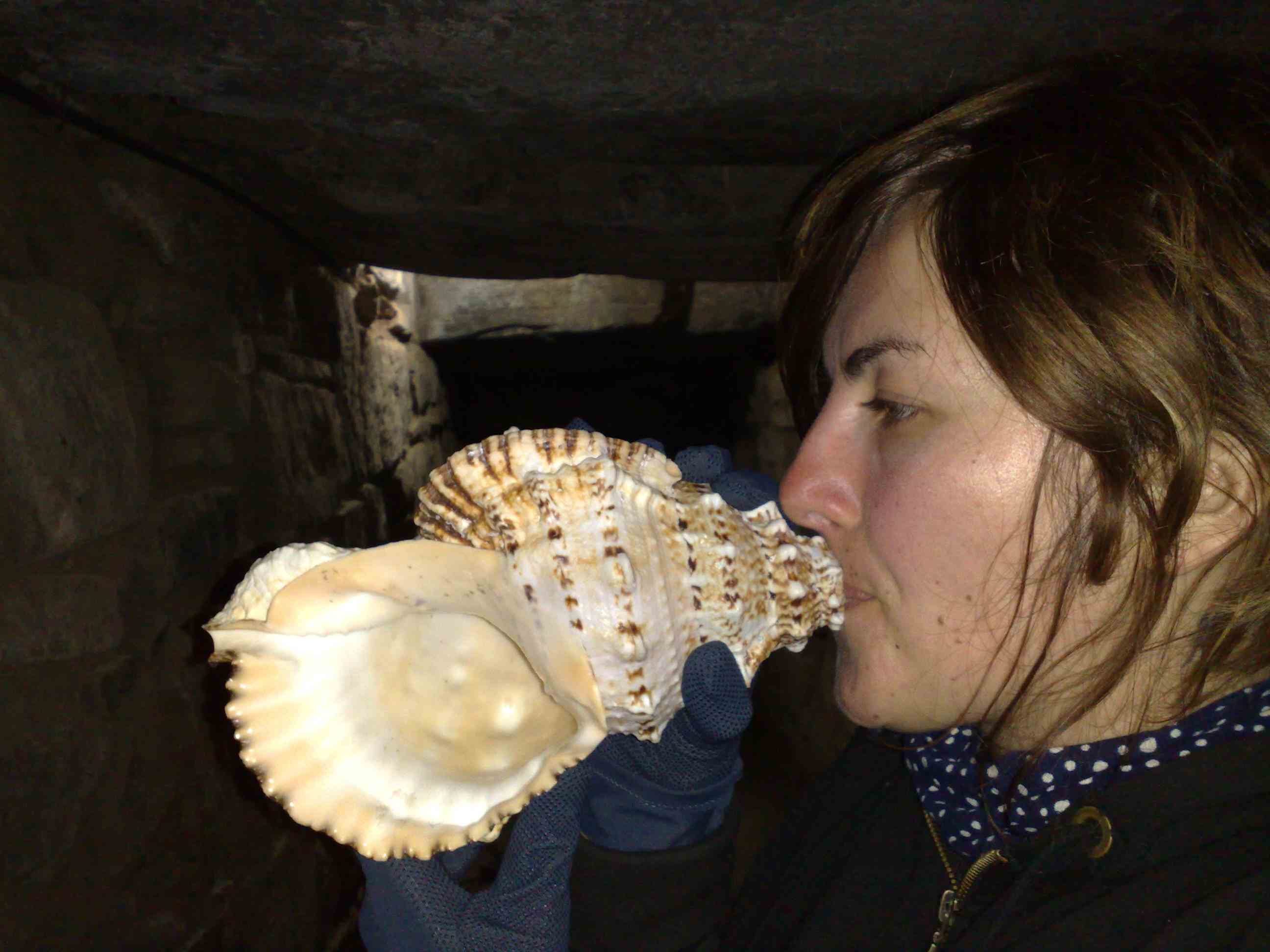 Cobi van Tonder is a South African born composer, media artist and lecturer, who followed her Stanford MFA with a PhD in Digital Arts and Humanities, from Trinity College, Dublin, Ireland. Music, sound art and inter-media works revolve around sound perception, multi-channel computer-generated composition, networked sound, acoustic studies, tools and methods for the control of spatiality in sound. The recursive theme in works are how they create, challenge and reinvent conceptions of the audio-physical experience of spaces and objects whilst maintaining a sense of mystery and beauty.
Cobi van Tonder is a South African born composer, media artist and lecturer, who followed her Stanford MFA with a PhD in Digital Arts and Humanities, from Trinity College, Dublin, Ireland. Music, sound art and inter-media works revolve around sound perception, multi-channel computer-generated composition, networked sound, acoustic studies, tools and methods for the control of spatiality in sound. The recursive theme in works are how they create, challenge and reinvent conceptions of the audio-physical experience of spaces and objects whilst maintaining a sense of mystery and beauty.
Van Tonder has also produced commercially for cinema, television, radio, and mobile media before commencing academic studies at a later age. She completed a MFA Art Practice degree at Stanford, USA; a BHons in Music in History and Society (Musicology) at the University of the Witwatersrand, Johannesburg, South Africa, a Jazz Diploma majoring in Film music and Jazz Piano at the Technikon of Pretoria, South Africa. Her work has been performed and showed in New York, London, San Jose, San Francisco, Seoul, Stuttgart, Berlin, Ogaki, Toronto, South Africa and Antarctica.
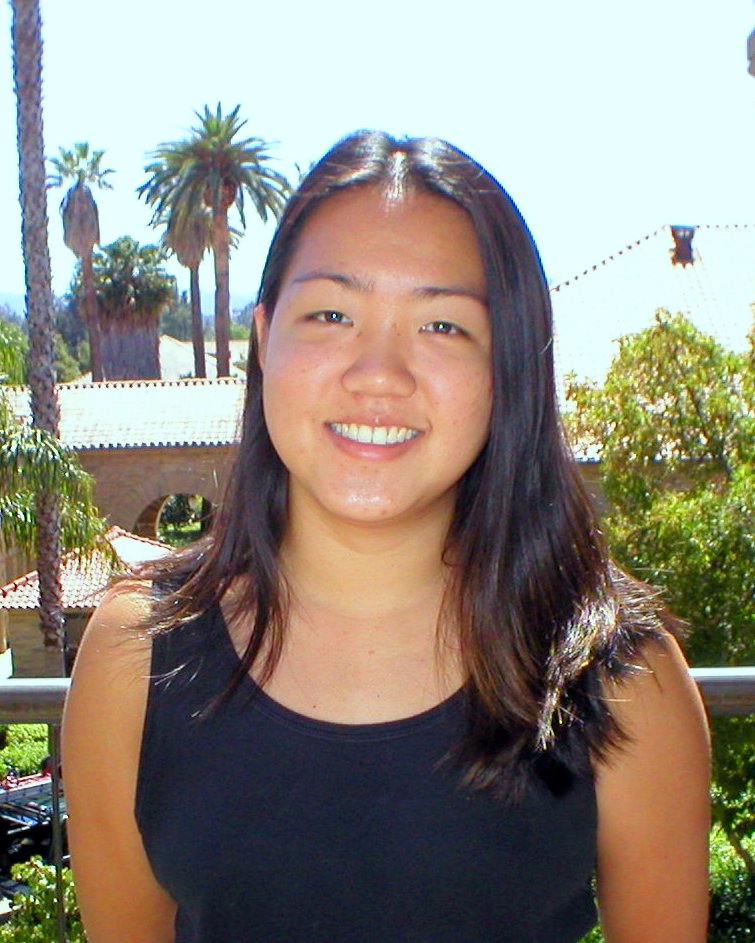 Leila Takayama is Acting Associate Professor of Psychology at UC Santa Cruz. During her collaboration on Chavín archaeological acoustics, she was a Human–Robot Interaction researcher formerly at Willow Garage (Menlo Park), who graduated with her PhD from Stanford University's CHIMe (Communication between Humans and Interactive Media) Lab, advised by Professor Clifford Nass. Her dissertation work investigated the psychological effects of the spatial location of projected voices. She has worked at Palo Alto Research Center (PARC) as a research assistant, interned at IBM Almaden Research Center, was a researcher at Nokia Research Center, and has done research while at University of California, Berkeley, in the Group for User Interface
Research (GUIR) in Computer Science. Her research interests include human–computer interaction, human–robot interaction, embodied cognition, and the psychological implications of mediatized sound.
Leila Takayama is Acting Associate Professor of Psychology at UC Santa Cruz. During her collaboration on Chavín archaeological acoustics, she was a Human–Robot Interaction researcher formerly at Willow Garage (Menlo Park), who graduated with her PhD from Stanford University's CHIMe (Communication between Humans and Interactive Media) Lab, advised by Professor Clifford Nass. Her dissertation work investigated the psychological effects of the spatial location of projected voices. She has worked at Palo Alto Research Center (PARC) as a research assistant, interned at IBM Almaden Research Center, was a researcher at Nokia Research Center, and has done research while at University of California, Berkeley, in the Group for User Interface
Research (GUIR) in Computer Science. Her research interests include human–computer interaction, human–robot interaction, embodied cognition, and the psychological implications of mediatized sound.
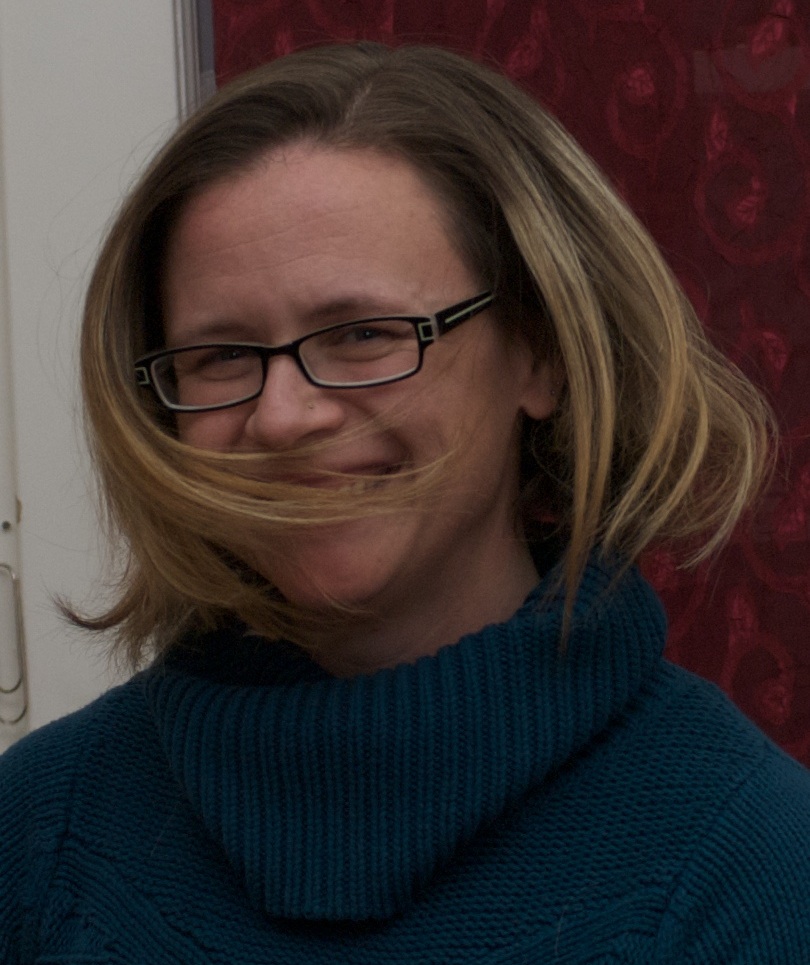 Katherine J. Murray earned her PhD from the Department of Communication at Stanford University where she served as a graduate research assistant in the CHIMe (Communication between Humans and Interactive Media) Lab. Working with Professor Cliff Nass, Kat's primary research focused on humans' facility with and reactions to new interface paradigms. For several years she has worked with the User Experience Research team at eBay, Inc. She is a graduate, with highest honors and special honors, of the Plan II Honors program at The University of Texas at Austin and holds an MA in Communication, Culture, and Technology from Georgetown University where her thesis received distinction. Her research interests include human-computer interaction, particularly mediated transaction behaviors and information-seeking behaviors.
Katherine J. Murray earned her PhD from the Department of Communication at Stanford University where she served as a graduate research assistant in the CHIMe (Communication between Humans and Interactive Media) Lab. Working with Professor Cliff Nass, Kat's primary research focused on humans' facility with and reactions to new interface paradigms. For several years she has worked with the User Experience Research team at eBay, Inc. She is a graduate, with highest honors and special honors, of the Plan II Honors program at The University of Texas at Austin and holds an MA in Communication, Culture, and Technology from Georgetown University where her thesis received distinction. Her research interests include human-computer interaction, particularly mediated transaction behaviors and information-seeking behaviors.
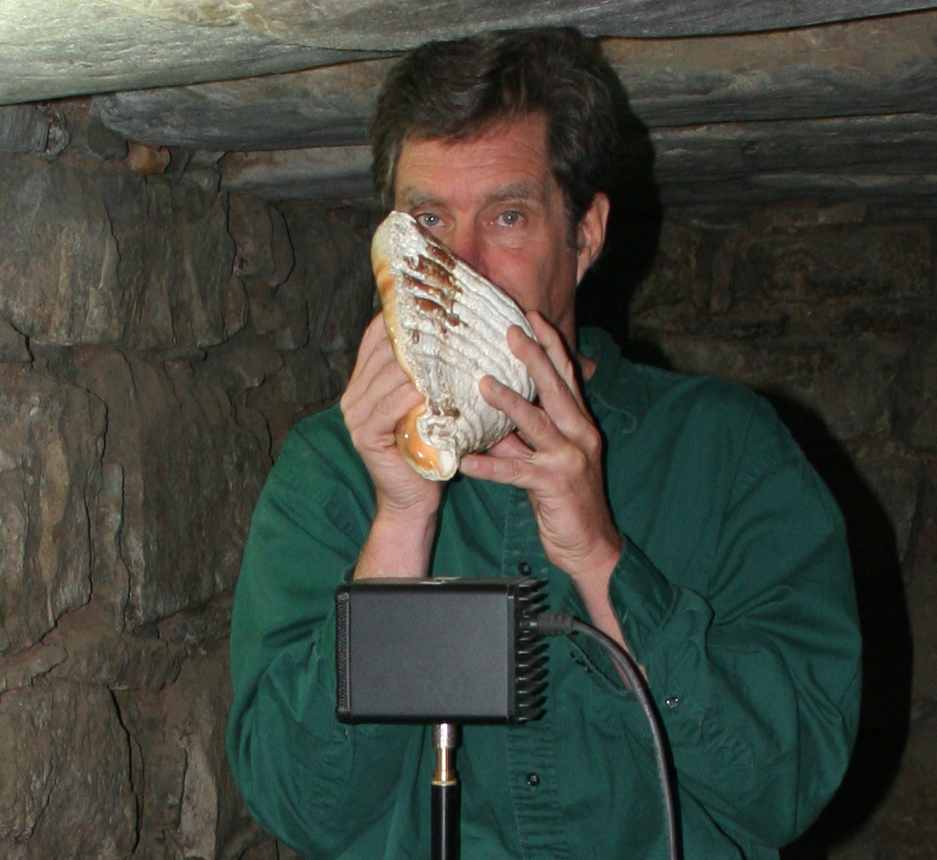 Chris Chafe is a composer/ cellist / music researcher with an interest in computer music composition and interactive performance. He has been a long-term denizen of the Center for Computer Research in Music and Acoustics, Stanford University where he directs the center and teaches computer music courses. His doctorate in music composition was completed at Stanford in 1983 with prior degrees in music from the University of California at San Diego and Antioch College. Two year-long research periods were spent at IRCAM, and the Banff Center for the Arts developing methods for computer sound synthesis based on physical models of musical instrument mechanics. Current projects include the "SoundWIRE" experiments for musical collaboration and network evaluation using high-speed internets for high-quality sound. He has performed his music in Europe, the Americas and Asia, and composed soundtracks for documentary films. Two recent discs of his works are available from Centaur Records. In Spring 2001, a collaboration with artist Greg Niemeyer entitled Ping was exhibited at SF MOMA and online via the Walker Art Center. A second collaboration, Oxygen Flute, was created for the San Jose Museum of Art. A CD of music from both installations is also available. "Organum" is their present project, a completely synthetic animation being developed for digital planetariums and individual game play.
Chris Chafe is a composer/ cellist / music researcher with an interest in computer music composition and interactive performance. He has been a long-term denizen of the Center for Computer Research in Music and Acoustics, Stanford University where he directs the center and teaches computer music courses. His doctorate in music composition was completed at Stanford in 1983 with prior degrees in music from the University of California at San Diego and Antioch College. Two year-long research periods were spent at IRCAM, and the Banff Center for the Arts developing methods for computer sound synthesis based on physical models of musical instrument mechanics. Current projects include the "SoundWIRE" experiments for musical collaboration and network evaluation using high-speed internets for high-quality sound. He has performed his music in Europe, the Americas and Asia, and composed soundtracks for documentary films. Two recent discs of his works are available from Centaur Records. In Spring 2001, a collaboration with artist Greg Niemeyer entitled Ping was exhibited at SF MOMA and online via the Walker Art Center. A second collaboration, Oxygen Flute, was created for the San Jose Museum of Art. A CD of music from both installations is also available. "Organum" is their present project, a completely synthetic animation being developed for digital planetariums and individual game play.
Nick Bryan is a PhD candidate at the Center for Computer Research in Music and Acoustics (CCRMA) at Stanford University. Nick received a M.A. in music technology from Stanford (2009), B.M. in music engineering (2007), and B.S. in electrical engineering with highest honors summa cum laude at the University of Miami, FL (2007).
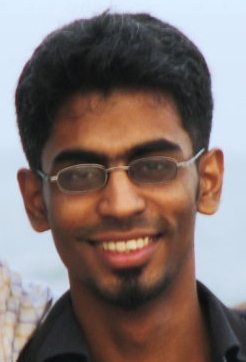 Ritesh Kolte earned his PhD from the Department of Electrical Engineering at Stanford University. He received a Bachelor of Technology degree in Electrical Engineering and a Master of Technology degree in Communication and Signal Processing, both from the Indian Institute of Technology Bombay in 2010.
Ritesh Kolte earned his PhD from the Department of Electrical Engineering at Stanford University. He received a Bachelor of Technology degree in Electrical Engineering and a Master of Technology degree in Communication and Signal Processing, both from the Indian Institute of Technology Bombay in 2010.
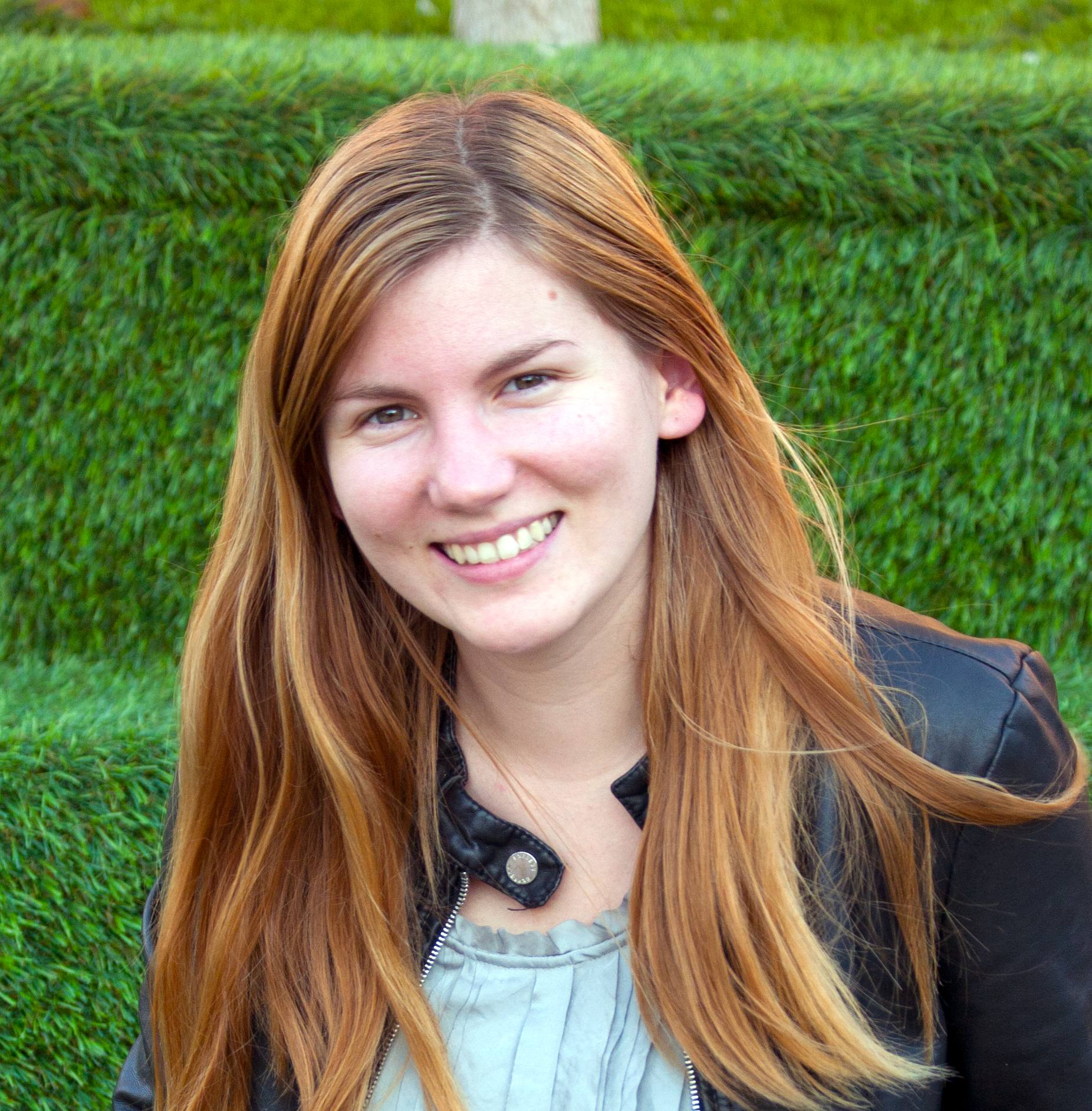 Gina Collecchia is a graduate of the Masters program at the Center for Computer Research in Music and Acoustics (CCRMA) and currently holds the title of Research Engineer at SoundHound. She holds a Bachelors degree in Mathematics from Reed College, where she produced a thesis entitled The Entropy of Musical Classification on music information retrieval and conditional entropy. She went on to write the book Numbers and Notes: An Introduction to Musical Signal Processing, published in 2012 by PSI Press. Her research interests include audio signal processing, acoustics, physical modeling, and sound design.
Gina Collecchia is a graduate of the Masters program at the Center for Computer Research in Music and Acoustics (CCRMA) and currently holds the title of Research Engineer at SoundHound. She holds a Bachelors degree in Mathematics from Reed College, where she produced a thesis entitled The Entropy of Musical Classification on music information retrieval and conditional entropy. She went on to write the book Numbers and Notes: An Introduction to Musical Signal Processing, published in 2012 by PSI Press. Her research interests include audio signal processing, acoustics, physical modeling, and sound design.
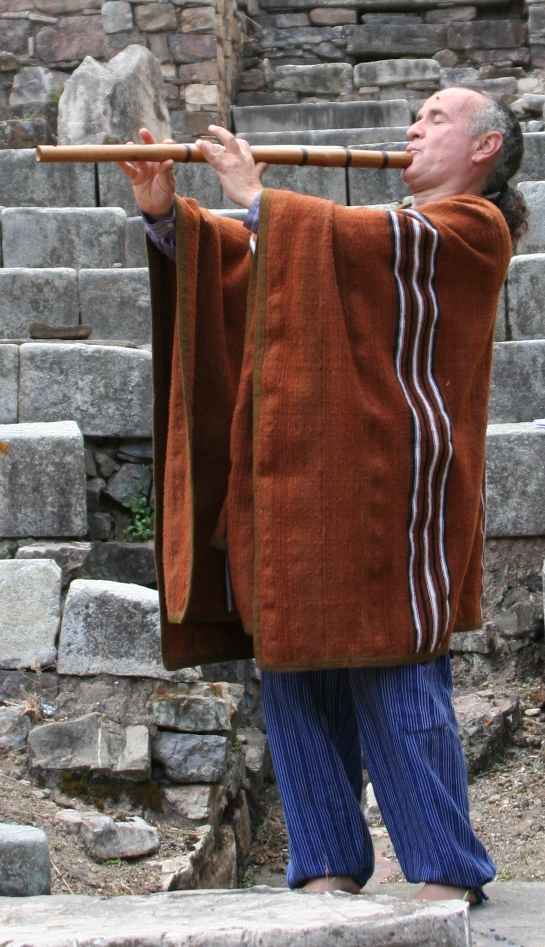 Tito La Rosa is a musician, sociologist and builder of musical instruments, investigating the music of ancient Peru. He makes original instruments replicating those from pre-Inca and Inca cultures, using ceramics, bones, stones, feathers, seeds, leaves, wood and cane. Through a constant search for a cultural dialogue between times and dreams, the musical proposal of Tito la Rosa reunites the ancestral with the contemporary, fusing ancient musical instruments with contemporary elements. The intent of his work is the search for balance and harmony with oneself and with nature.
Tito La Rosa is a musician, sociologist and builder of musical instruments, investigating the music of ancient Peru. He makes original instruments replicating those from pre-Inca and Inca cultures, using ceramics, bones, stones, feathers, seeds, leaves, wood and cane. Through a constant search for a cultural dialogue between times and dreams, the musical proposal of Tito la Rosa reunites the ancestral with the contemporary, fusing ancient musical instruments with contemporary elements. The intent of his work is the search for balance and harmony with oneself and with nature.
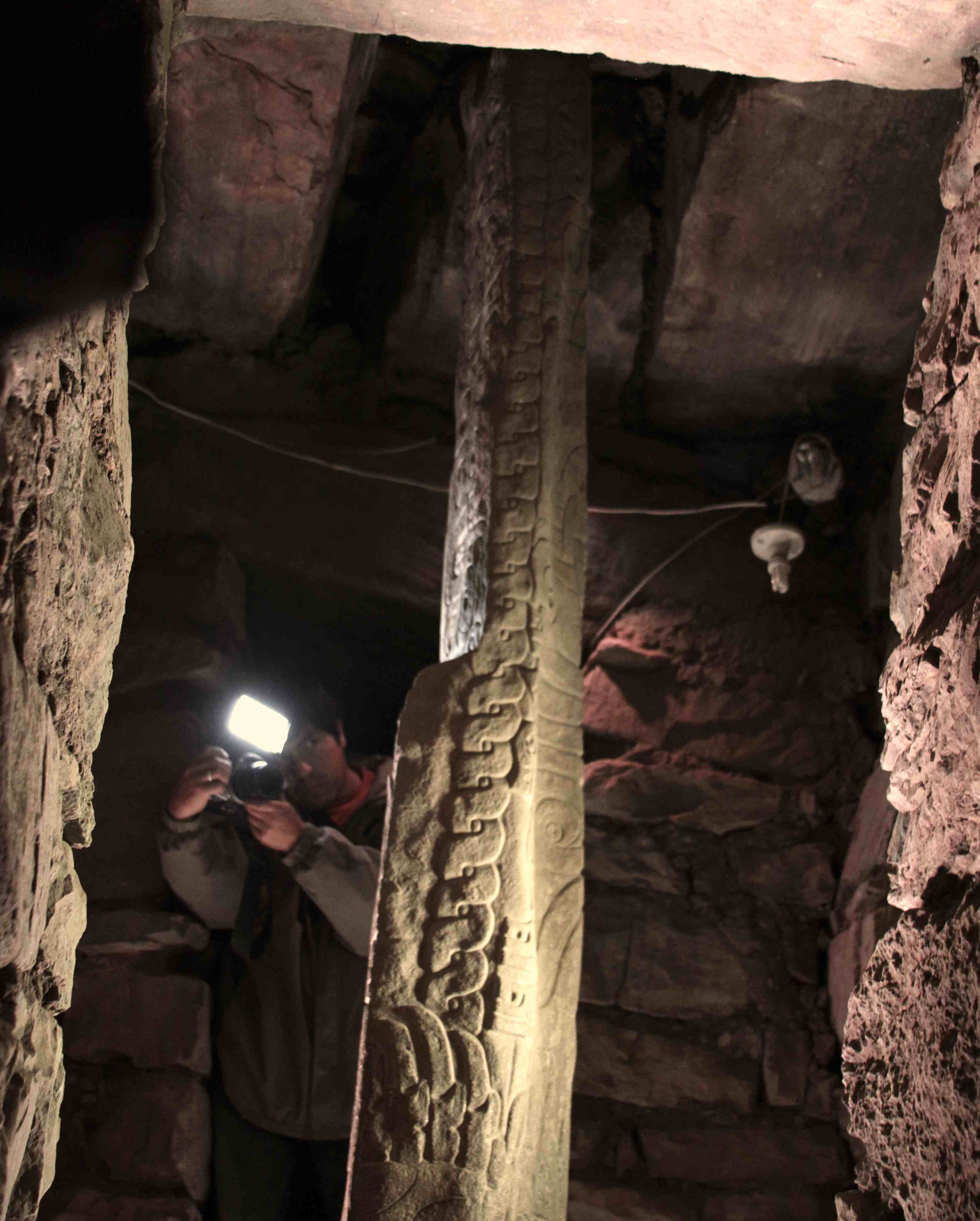 José Luis Cruzado Coronel, cultural heritage consultant and photographer, videographer, ceramicist and educator, worked with Stanford Archaeology at Chavín de Huántar, Perú since 2000, developing expertise in photogrammetry, architectural modeling, and mapping/GIS. His photography has been shown in international exhibits, including the Global Heritage Fund's 2010 show Preservation by Design: Safeguarding the World's Cultural Heritage. With María Mendoza, he has developed projects to recover ancient techniques in ceramics, bone and shell carving, and foster new artisan work in Chavín.
José Luis Cruzado Coronel, cultural heritage consultant and photographer, videographer, ceramicist and educator, worked with Stanford Archaeology at Chavín de Huántar, Perú since 2000, developing expertise in photogrammetry, architectural modeling, and mapping/GIS. His photography has been shown in international exhibits, including the Global Heritage Fund's 2010 show Preservation by Design: Safeguarding the World's Cultural Heritage. With María Mendoza, he has developed projects to recover ancient techniques in ceramics, bone and shell carving, and foster new artisan work in Chavín.
Riemann Ramírez Rodríguez comenzó trabajos en la conservación arqueológica para el PIACCdH en 2005, desde entonces ha continuado en varios papeles para este proyecto. Durante sus trabajos en Chavín de Huántar, él comenzó a tocar pututu para experimentos arqueoacústicos con Dra. Kolar y aprendió técnicas de actuación del instrumento con el gran maestro Tito La Rosa. Sr. Ramírez, conocido por su capacidad de sacar tonos de pututu extremadamente largos, es intérprete de pututu en las corridas y vísperas de las fiestas patronales del pueblo de Chavín de Huantar, en las festividades de “Chavín de Noche” en el monumento arqueológico y también para varios documentales y algunos rituales de misticismo.
Arql. Ricardo Guerrero de Luna Rueda (nombre espiritual Mansur, aprendiz Sufi) es licenciado en Arqueología por la facultad de Letras y Ciencias Humanas de la Pontificia Universidad Católica del Perú, donde sustentó su tesis "Una re-evaluación de los canales subterráneos de Chavín de Huántar: Hipótesis sobre su multifuncionalidad" (2017). Ha participado en 8 temporadas de campo en el PIACCdH. En los últimos años ha sido coordinador de proyectos sociales en diferentes instituciones y educador sobre Patrimonio Cultural y conservación del medioambiente. Asimismo, el arqueólogo Guerrero de Luna es danzante y músico semiprofesional. Ha tocado la zampoña desde niño, y en los últimos años ha desarrollado un gusto más profundo por la música, afinando sus habilidades con la quena, la zampoña, el cajón, el tambor y el pututu, el cual considera como un instrumento milenario vinculado a la medicina energética.
Obert Silva Espinoza trabaja en el monumento arqueológico Chavín de Huántar y ha trabajado para el PIACCdH a partir del 2010. Desde su niñez él ha tocado instrumentos de viento con gran facilidad y creatividad, haciendo quenas y flautas de carrizo o pedazos de tubo hasta llegar realizar zampoñas de arcilla y de la planta llamada “cola de caballo”, y pertenecía a la banda de músicos en su colegio. Sr. Silva empezó a tocar pututu en el año 2013 y ha participado en varios eventos como intérprete experto del instrumento, incluyendo las festividades de Chavín de Noche y el documental “Chavín: La Roma de los Andes” (2015).
Arql. Ronald San Miguel Fernández es licenciado en Arqueología por la Universidad Nacional Mayor de San Marcos, y se especializa en herramientas digitales para la elaboración de gráficos arqueológicos. Llegó a apoyar al PIACCdH durante la temporada del 2019. Actualmente viene trabajando para el Proyecto Qhapaq an en uno de sus proyectos integrales dentro de la zona arqueológica Huaycán de Cieneguilla, al sureste de Lima. Aunque no es músico, su gusto por la música andina lo llevó a la afición por la ejecución de instrumentos como la quena, la zampoña, el cajón, la guitarra y los teclados. Su experiencia con el pututu la empezó en las actividades culturales desarrolladas durante la “Semana del Patrimonio Cultural” en la zona arqueológica Huaycán de Cieneguilla.
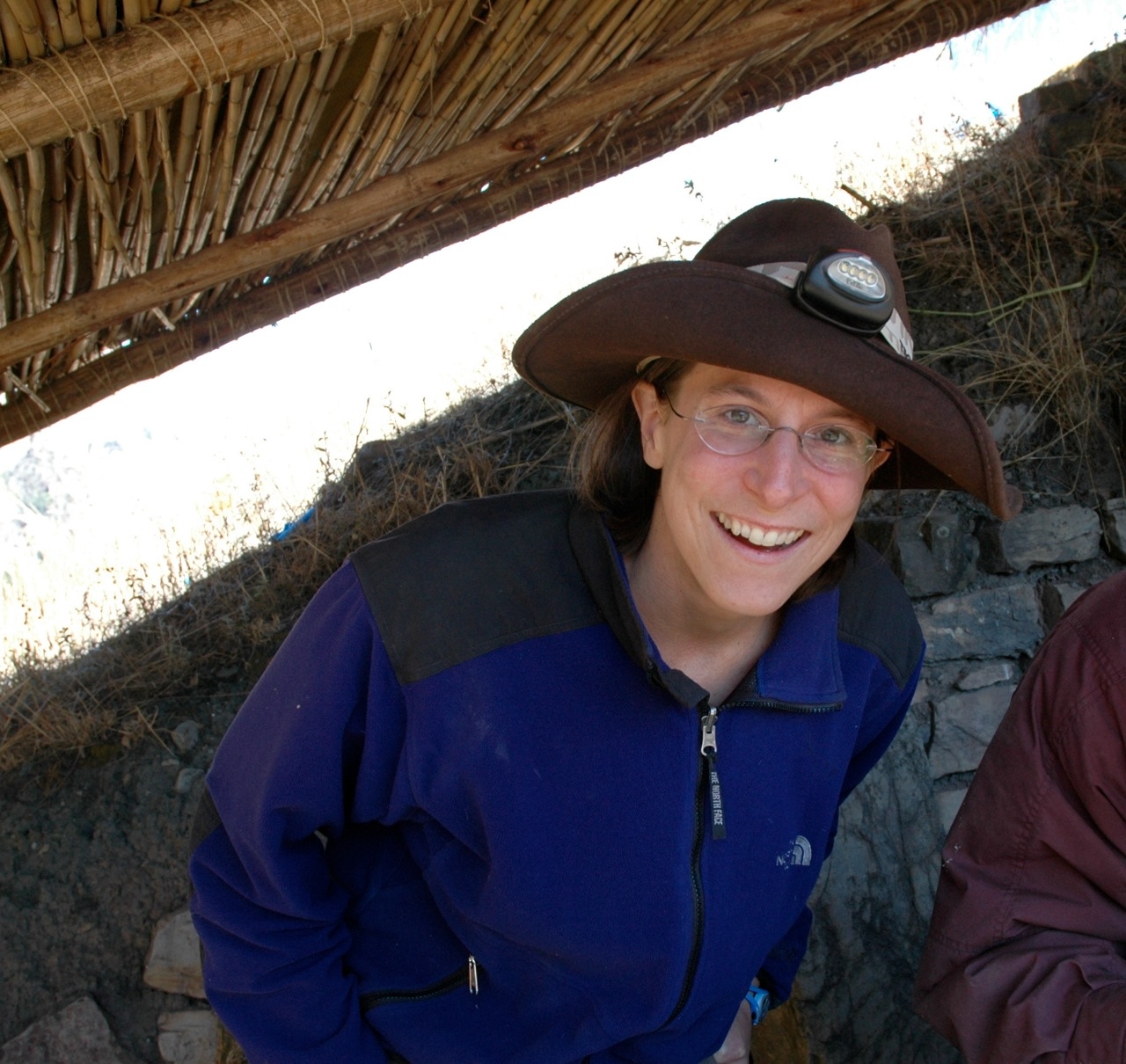 Silvia Rodriguez Kembel received her PhD from Stanford University in 2001. She is currently an Assistant Professor Adjunct in the Department of Anthropology at the University of Colorado, Boulder, and is a member of the Institute of Andean Studies. Her research explores the roles that architecture and the built environment play in the development of human societies, particularly during the Andean formative period. Specifically, she studies the design, construction, and growth of prehistoric monumental architecture using new techniques including three-dimensional digital mapping, computer modeling, systematic spatial analyses, architectural patterning, and direct dating of construction materials. She has conducted research on Chavín de Huántar since 1996, supported by grants from sources including the National Science Foundation, the National Geographic Society Committee for Research and Exploration, and the Howard Heinz Foundation. Her PhD dissertation, Architectural Sequence and Chronology at Chavin de Huantar, Peru, won the Society for American Archaeology 2002 Dissertation Award.
Silvia Rodriguez Kembel received her PhD from Stanford University in 2001. She is currently an Assistant Professor Adjunct in the Department of Anthropology at the University of Colorado, Boulder, and is a member of the Institute of Andean Studies. Her research explores the roles that architecture and the built environment play in the development of human societies, particularly during the Andean formative period. Specifically, she studies the design, construction, and growth of prehistoric monumental architecture using new techniques including three-dimensional digital mapping, computer modeling, systematic spatial analyses, architectural patterning, and direct dating of construction materials. She has conducted research on Chavín de Huántar since 1996, supported by grants from sources including the National Science Foundation, the National Geographic Society Committee for Research and Exploration, and the Howard Heinz Foundation. Her PhD dissertation, Architectural Sequence and Chronology at Chavin de Huantar, Peru, won the Society for American Archaeology 2002 Dissertation Award.
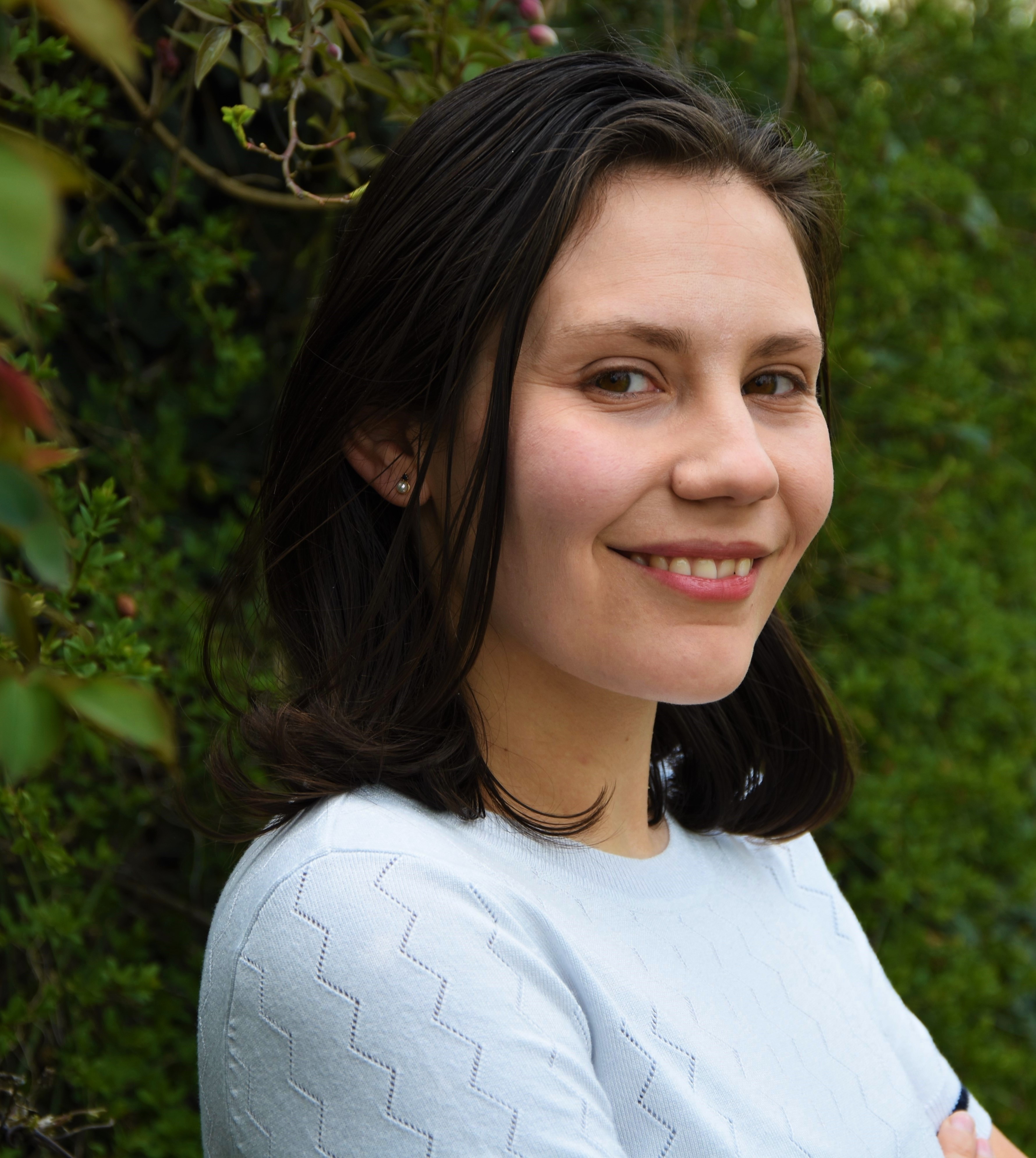 Mélanie Ferras is Associate Professor of Prehispanic Americas Archaeology at Sorbonne University, Faculté de Lettres in the CERAP (Center of Research on Pre-Hispanic Americas). Dr. Ferras is developing an analysis of sound and musical practices of the Pre-Hispanic Central Andes from the study of the archaeological contexts in which the instruments were intentionally deposited to underline the social and symbolical functions held by those specific artifacts in Andean past societies. She is a field archaeologist in the Programa de Investigación Arqueológica y Conservación Chavín de Huántar (PIACCdH), and she focused on a cross-site contextual study of the Chavín pututus for her 2019 doctoral dissertation.
Mélanie Ferras is Associate Professor of Prehispanic Americas Archaeology at Sorbonne University, Faculté de Lettres in the CERAP (Center of Research on Pre-Hispanic Americas). Dr. Ferras is developing an analysis of sound and musical practices of the Pre-Hispanic Central Andes from the study of the archaeological contexts in which the instruments were intentionally deposited to underline the social and symbolical functions held by those specific artifacts in Andean past societies. She is a field archaeologist in the Programa de Investigación Arqueológica y Conservación Chavín de Huántar (PIACCdH), and she focused on a cross-site contextual study of the Chavín pututus for her 2019 doctoral dissertation.